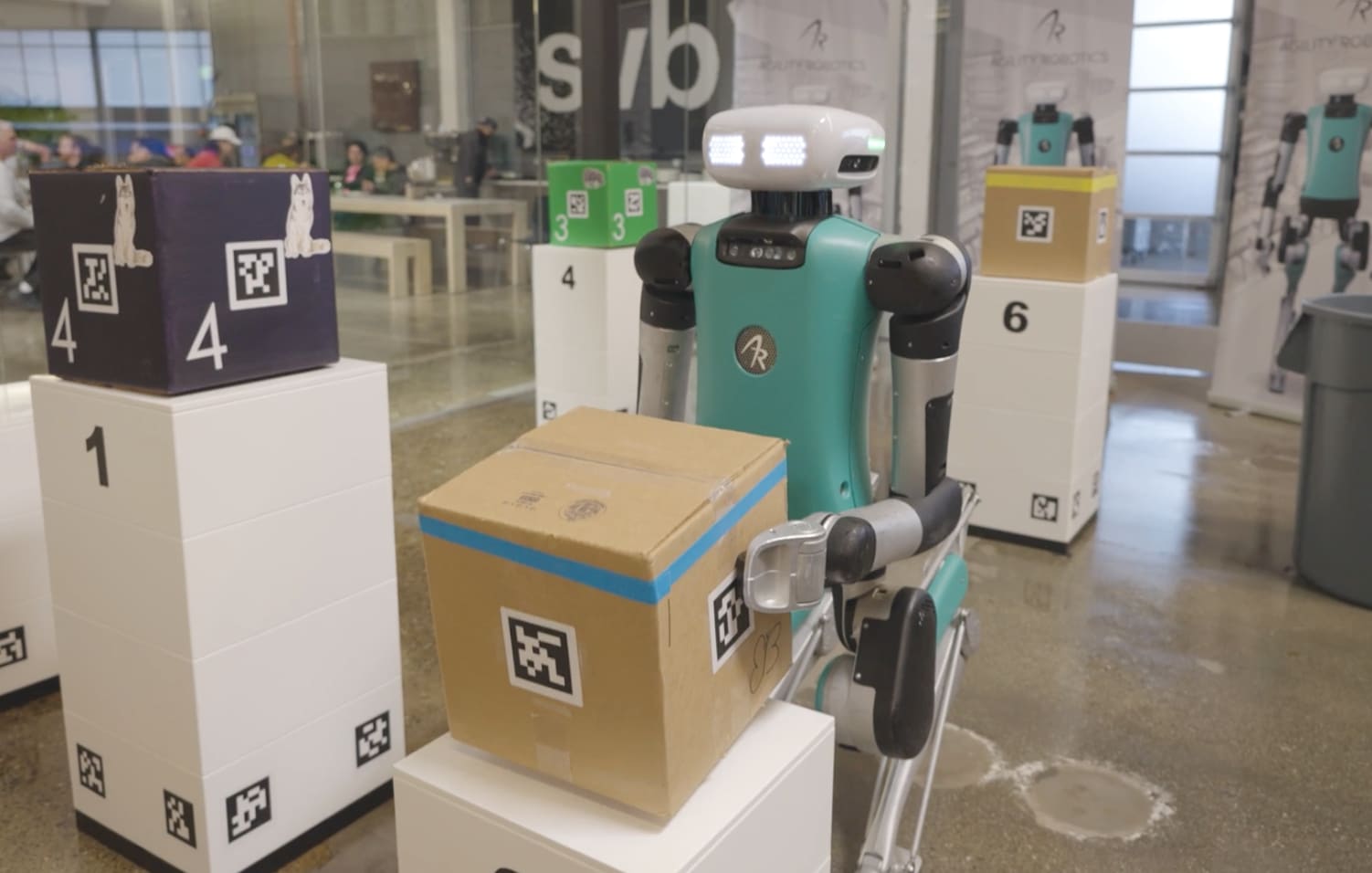
AI-powered robots are popping up across Silicon Valley. If some industry experts are right, they could help solve a global labor shortage.
Companies like Tesla, Amazon, Microsoft and Nvidia have plowed billions of dollars into what are known as “humanoid” robots. These machines typically stand on two legs, and are designed to perform tasks meant for people.
For now, they’re being deployed in warehouses. But proponents say the possibilities extend well beyond fulfillment centers. These bots could eventually work alongside people, in homes and offices.
Tesla CEO Elon Musk has been among the leading evangelists. The electric vehicle maker is betting on its Optimus robot, which Musk argues are “going to transform the world to a degree even greater than the cars.”
During the company’s first-quarter earnings call, Musk said Optimus could propel it to a $25 trillion market cap and that it will amount to “a majority of Tesla’s long-term value.” Amazon has backed Agility Robotics, and is already deploying its Digit robots in fulfillment centers.
The market for humanoids is set to balloon to $38 billion in the next 20 years, according to an analysis by Goldman Sachs. The firm predicts these robots will be the next “must-have” device, not unlike smartphones or EVs. Goldman also say humanoids may be “vital for manufacturing and dangerous work, but they would also help with elderly care and fill in for labor shortages in factories.”
AI boost
These human-like robots have been around for decades. But there’s a renewed optimism in the industry, thanks to recent leaps in artificial intelligence. The same technology behind OpenAI’s ChatGPT is enabling robots to interpret language and commands, and make decisions on how to act. The machines use computer vision and, similar to humans, train in real world scenarios.
“Robotics is where AI meets reality,” Henrik Christensen, professor of computer science and engineering at University of California at San Diego, told CNBC. “That makes for some very interesting new combinations that I think even five years ago, we could not imagine.”
A global labor shortage is another key to recent interest in humanoids. In the U.S. alone, there are roughly 8.5 million jobs, according to the U.S. Chamber of Commerce. The gap is especially deep in manufacturing, where Goldman estimates there’s a shortage of 500,000 people, set to grow to 2 million workers by 2030. Proponents say robots are filling jobs that are monotonous and dangerous.
“We’re starting in what we call the dull, dirty, dangerous tasks, these tasks where we have big labor shortages today, where we don’t have people to do this work,” said Jeff Cardenas, CEO and co-founder of robot startup Apptronik.
Competition is global. China already dominates the industry, passing Japan in 2013 as the world’s largest installer of industrial robots, and now accounts for more than half the world total, according to Stanford’s AI Index Report.
“The Chinese market is the biggest in the world,” said Tom Andersson, principal analyst at Styleintelligence, adding that the only other company in the West that has anything similar to what China is producing is Amazon. “But Chinese companies are catching up fast.”
Still, there are roadblocks. The machines are expensive, and there are safety concerns about giving robots free rein in factories.
“When it comes to mass adoption or even something closely resembling mass adoption, I think we’ll have to wait quite a few years. Probably a decade at least,” said Andersson. “Sorry, Musk.”
Watch the entire video to learn more about the rise of humanoid robots.
EMEA Tribune is not involved in this news article, it is taken from our partners and or from the News Agencies. Copyright and Credit go to the News Agencies, email news@emeatribune.com Follow our WhatsApp verified Channel





